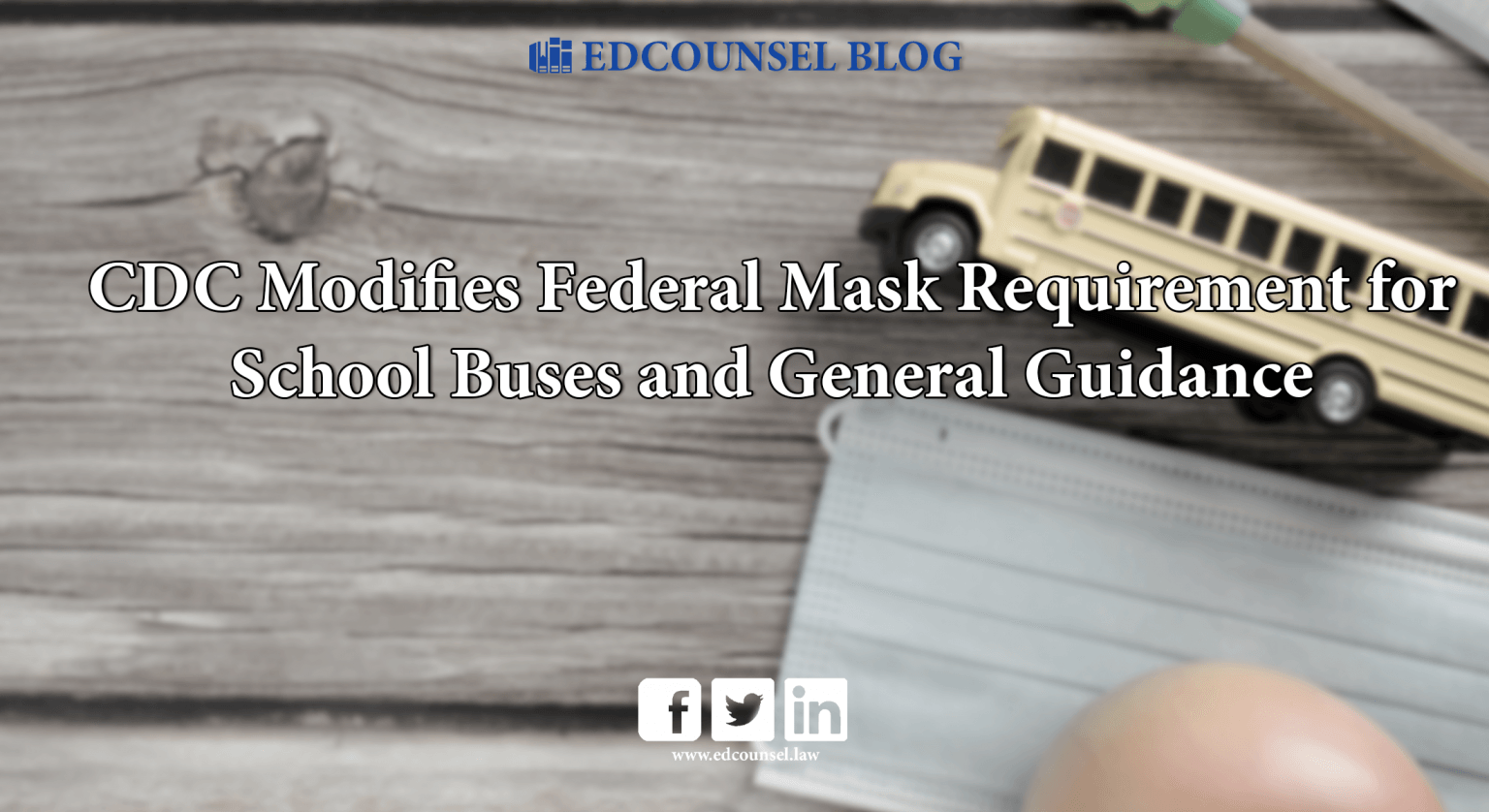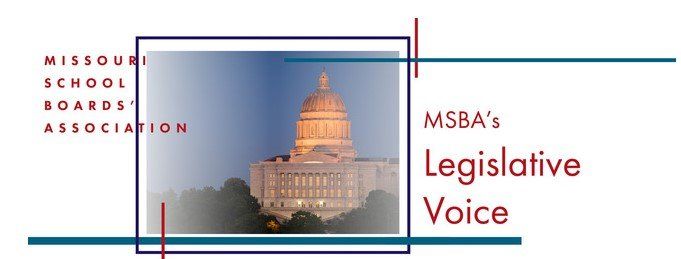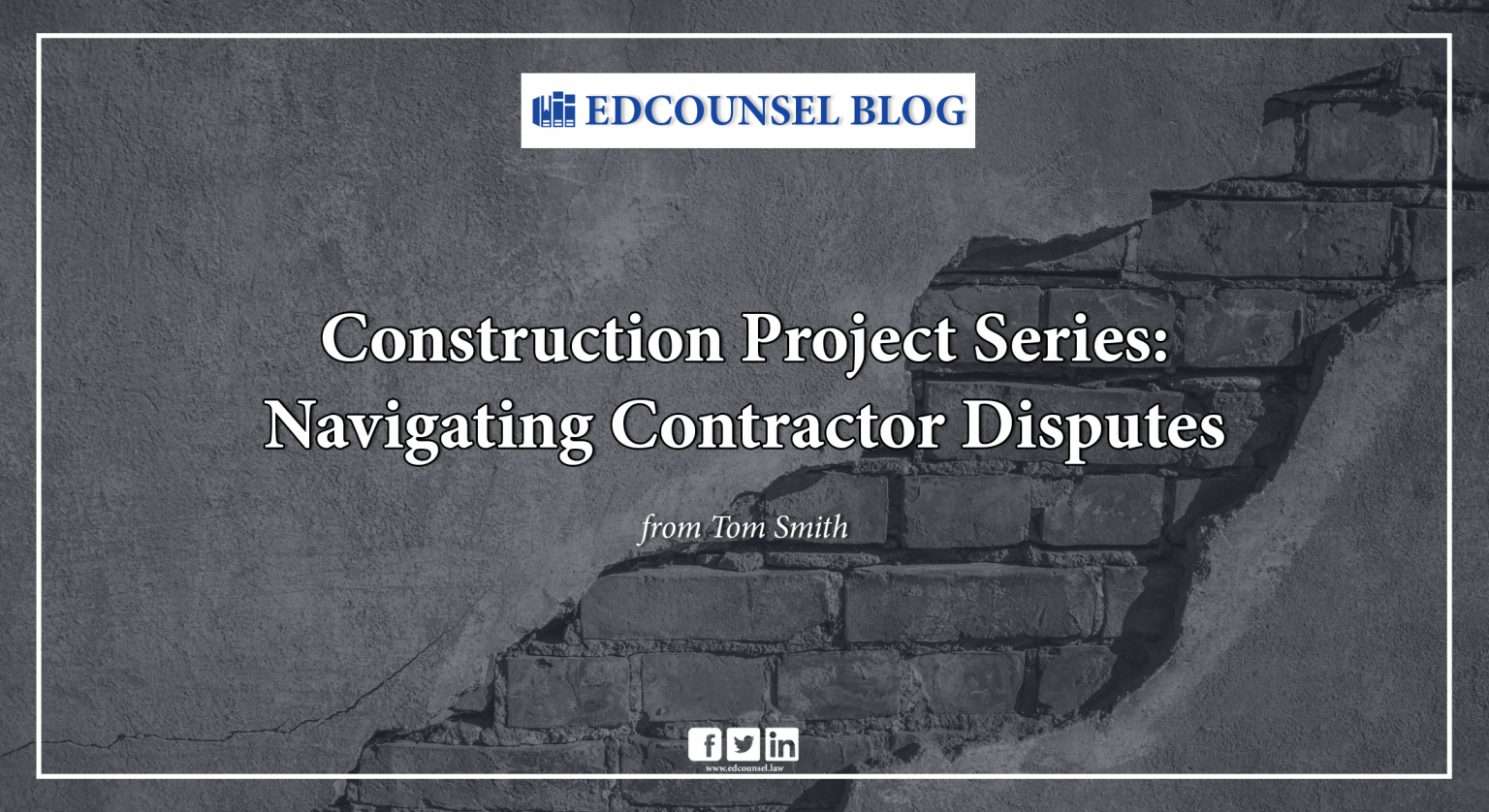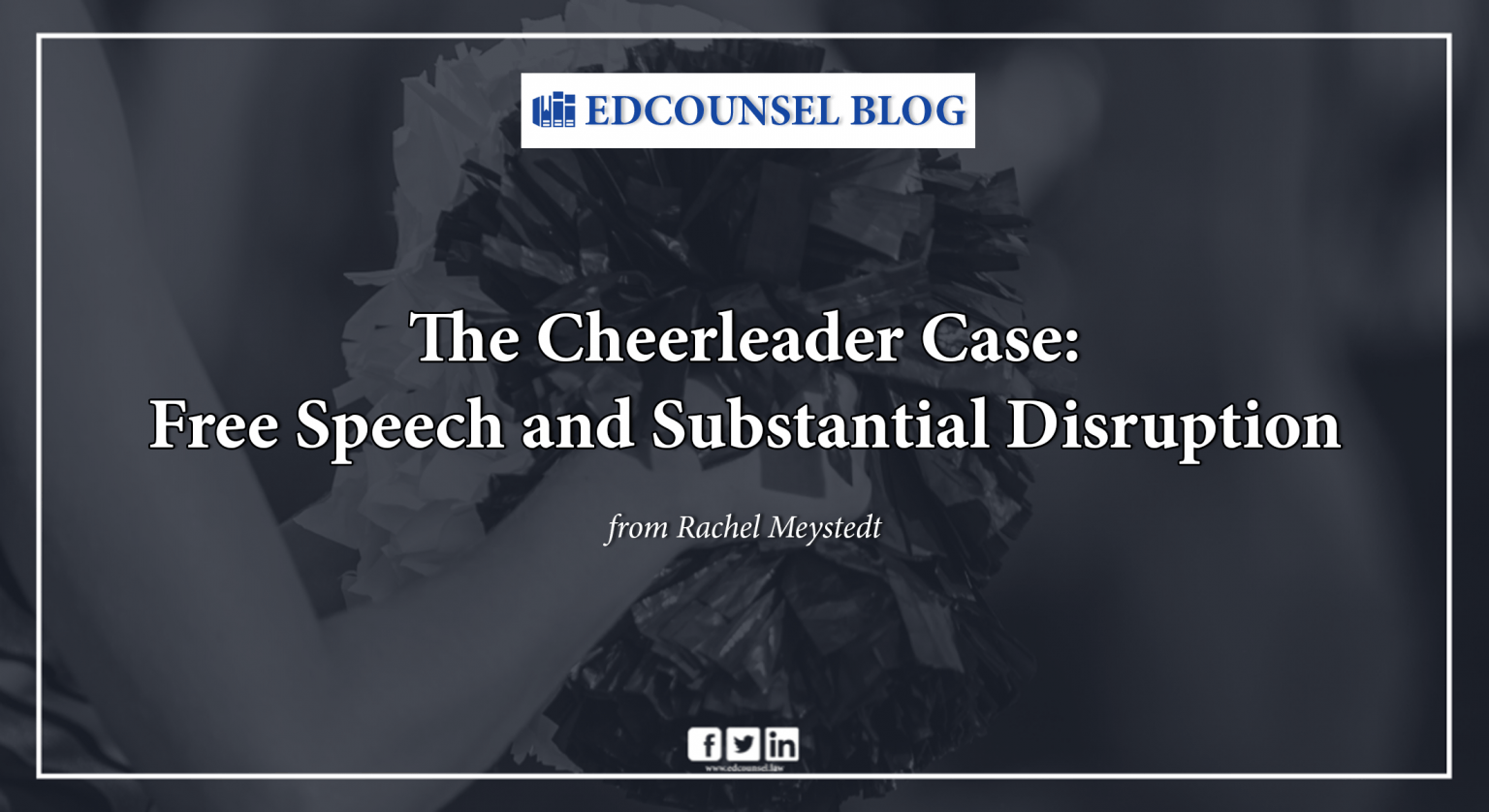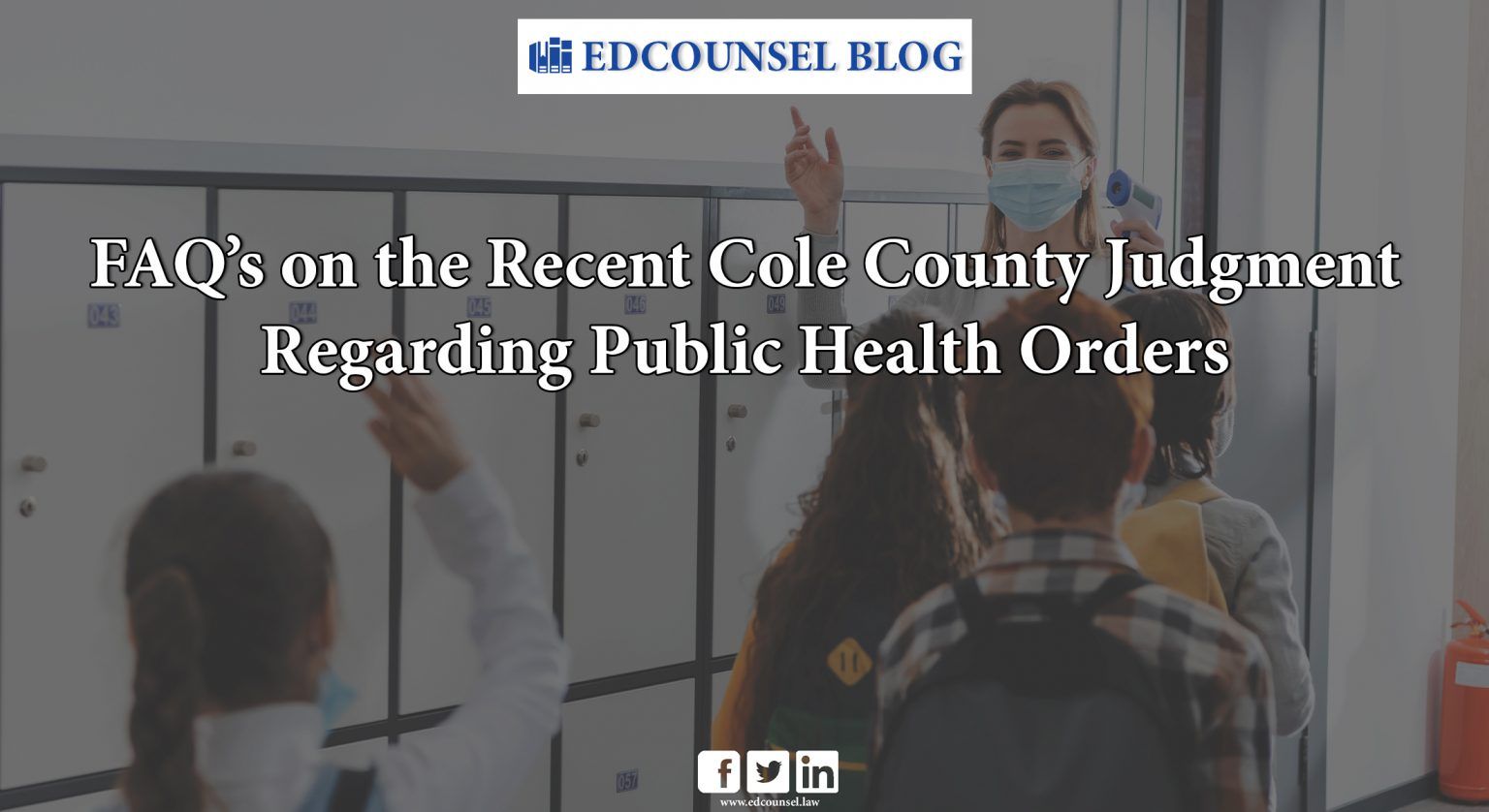
As most Missouri school districts are aware, last week a judgment was issued out of the Circuit Court of Cole County in a case involving the Missouri Department of Health and Senior Services (“DHSS”) which has significant implications for school districts. While we have already released a podcast discussing this judgment, we’ve received many follow-up questions over the past week. To better assist districts in determining how to proceed in the wake of this judgment, we’ve compiled a list of frequently asked questions below with suggested guidance for each. If your district needs additional assistance, please don’t hesitate to reach out to a member of the EdCounsel team.
1. What was the lawsuit about?
The Plaintiffs in this case included an individual and two restaurants in the St. Louis area. The only Defendant in this case was DHSS. No schools or local health agencies (“LHAs”) were parties to this case. Judge Green presided over this case in Cole County. The Plaintiffs were from the St. Louis area but because DHSS is seated and located in Jefferson City, Cole County, Missouri, this was the appropriate venue.
The Plaintiffs claimed the Director of DHSS and the St. Louis County Department of Public Health (the LHA) do not have the ability to exercise personal discretion in issuing control measures, such as enforcement orders impacting schools and businesses. They claimed DHSS’ regulations permitting LHAs to do so were invalid because DHSS’ regulations allow an unelected official to essentially write laws – something which is reserved for elected, legislative bodies.
2. What does the judgment say?
The judgment contains nine separate orders. We won’t list all of those here, but the important ones for school districts’ purposes involve the invalidation of certain state regulations promulgated by DHSS and the prevention of certain actions from being taken pursuant to the remaining valid regulations.
More specifically, the judgment strikes down regulations that give DHSS and LHAs the authority to implement control measures regarding communicable diseases, including quarantines, masking, and closures of schools or businesses. It also strikes down regulations that permit these entities to treat close contacts as positive cases until a diagnosis is verified. The judgment goes even further than just the regulations though, and also orders that DHSS and LHAs refrain from taking action pursuant to any of the remaining regulations that require an exercise of independent discretion.
Notably, the judgment and one of the orders contained therein specifically refer to students being excluded from school. The judgment references quarantine orders by LHAs that prevent students from going to school. One of the orders then cites a regulation that states individuals who have certain diseases (or are liable to transmit certain diseases) can be excluded from school. While the order cites that regulation, it specifically states that it is not striking that regulation down; so that regulation is still valid and in effect.
3. Is the judgment currently in effect?
Unfortunately, it is not clear if the Cole County judgment is currently in effect. The confusion surrounding this has only been made worse by differing opinions among state agencies, LHAs, and other organizations.
Based on correspondence that has been sent out over the past week, it appears that DHSS, DESE, and MSHSAA all are taking the position that the judgment does not become effective until it becomes a final judgment, which is typically 30 days after it is issued unless an appeal is taken and the judgment is stayed. Some LHAs have taken this position as well.
In contrast, the Attorney General has stated that he is ready to enforce the judgment across the state. Additionally, some LHAs have already notified school districts in their area that they are no longer issuing any quarantine orders. For example, St. Charles County officials have stated that the county is no longer issuing any quarantine orders and has not since November 24, the day after the Cole County judgment was issued.
Given the confusion on the effective date of the Cole County judgment, districts will be best served by checking with their applicable LHA to see whether there are any public health orders issued by the LHA that are still in effect, and what position the LHA is taking with regard to when the Cole County judgment takes effect. If an LHA has any orders in effect and doesn’t think the Cole County judgment is in effect yet, then the district will need to check with its legal counsel to discuss the risks associated with not complying with the LHA’s orders at this point.
4. How does this affect school districts?
Although the determination in this case is not directly applicable to schools, it still has an impact. The judgment invalidates a majority of the authority that LHAs rely on in issuing public health orders. Once the judgment is in effect, which is up for debate as explained above, an LHA’s ability to impose orders like masking and quarantines will be severely limited. If a district is in an area where public health orders are in effect, then it’s very likely that those orders either are no longer or will no longer be in effect. As a result, districts will likely not have those orders to rely on when making decisions about what, if any, protective measures will be put in place against COVID-19.
It is important to remember though that, while DHSS’ regulations regarding quarantine have been invalidated, there is still a regulation that individuals with a communicable disease or liable to transmit one can be excluded from school. As explained above (in question #2), the Judge did not rule and strike down this regulation. However, districts will still be faced with the question of where to draw the line on which individuals are liable to transmit COVID-19 (i.e. close contacts with symptoms, close contacts regardless of symptoms, etc.), since the LHA’s determination on that is no longer controlling.
5. Can school districts still implement their own control measures like masking, contact tracing, and/or preventing students and staff from coming to school?
Yes, a district may continue to implement its own control measures, at least to some extent.
First, in terms of quarantine, there is still an applicable state regulation which allows schools to exclude individuals with communicable or dangerous diseases from attending. As explained previously, this state regulation requires that any “persons suffering from a reportable disease or who are liable to transmit a reportable disease”, including COVID-19, be “barred from attending school.” See 19 CSR 20-20.030.1; see also 19 CSR 20-20.020(1)(A) (which lists COVID-19 as a “reportable disease.”). To be clear, this would not be a quarantine order by a district. Instead, it would simply be an exclusion from school and district activities. The Cole County judgment did not strike down these regulations, so the regulations are still in place. In effect, this means that anyone who has tested positive for COVID-19, or who the district determines is liable to transmit COVID-19, can be excluded from school until they have a doctor’s note indicating that they are no longer contagious or they have passed the most prominent stage of transmissibility (as provided by several medical sources cited in the regulation).
With respect to other measures, including masking, contract tracing, etc., district’s may still implement these things and other safety measures pursuant to guidance from federal, state, or local government officials depending on your applicable board policy. A district will just be acting on its own in doing so. For example, a district can continue to contact trace, but it will really only be for the purpose of determining if someone is “liable to transmit” COVID-19 based on the guidelines the district has adopted. Additionally, to the extent your district’s policy states that the district will follow guidance, be that from the CDC, DHSS, DESE, or LHAs, it may continue to do so.
6. What actions should a school district be taking in the wake of this order?
• The first step is to confer with your LHA to determine what they’re doing. For instance, are they still going to provide guidance as to when someone should be quarantined? Are they pointing stakeholders to CDC or other guidelines for recommendations on COVID-19 mitigation measures? Are they taking the position that the Cole County judgment isn’t effective until it becomes a final judgment?
o Mitigation of the district’s risk in potential COVID-19 injury claims depends on whether the district is following its own policies (discussed further below), and whether it is following guidance provided by health officials, including the need to look to other health officials’ guidance in making decisions.
• Next, reexamine your “Safe Return to In-Person Instruction and Continuity of Services Plan” to determine what language is included related to what officials the district is relying on in making determinations related to COVID-19 mitigation measures.
o Likely, these Plans have been approved by your Board of Education, which is an elected body of the District, which shields those decisions somewhat based on the language of the Cole County judgment, which focuses on edicts issued by non-elected officials. If your Board still supports its decisions as outlined in that Plan, then the district can continue to follow that Plan moving forward.
o Note, however, that if the Plan or any other decisions issued by the Board provide a good deal of discretion to the Superintendent or other employees of the district to make decisions related to COVID-19 mitigation measures, it could create risk based on the Cole County judgment since district employees are also non-elected officials.
• Many districts’ Board Policies state that the district will exclude a student from school if they have or are liable to transmit a communicable disease. Additionally, the DHSS regulation, 19 CSR 20-20.030(1), regarding exclusion from school if an individual has or is “liable to transmit” a communicable disease, including COVID-19, is still in effect; so those individuals can be excluded from school.
o That means your district, and specifically your Board of Education, will need to determine what constitutes “liable to transmit.”
o The guidance the district has received so far, including local and CDC guidance regarding close contacts, would still be in play here. Essentially, close contacts would be “liable to transmit” COVID-19, based on the guidance issued by those health authorities. As noted above, public health orders by non-elected public officials are prohibited by the Cole County judgment, but guidance is not.
o If the District deviates from that guidance, it will need to be able to articulate a reason why it is doing so, as explained below.
• Examine your board policy on communicable disease and ensure it aligns with what the district and Board of Education want to do in terms of recommendations and guidance. If your policy currently says the district will follow local health official guidance, the district should either change the policy to match the district’s practice or continue to follow the policy. This will mitigate the risk of a claim that the district is not immune from a claim that someone contracted COVID-19 because the district was reckless in not following its own policy.
o As mentioned above, if policy relies heavily on the Superintendent or other district employees, then changes to the policy may need to be considered by the Board to protect the district from claims that a non-elected official is making health orders improperly, in light of the Cole County judgment.
• Be prepared to explain why the district isn’t following recommendations and guidance if it isn’t.
o The district’s risk in COVID-19-related claims is heightened if the district isn’t following the guidance of the entities listed in your Board Policy. It creates legal exposure for the district not to follow its own policy. Additionally, if COVID-19-related claims are brought, the district could be found to have acted recklessly in not following health guidance with regard to those claims. That’s why it will be very important to be able to point to concrete reasons as to why the district isn’t following that guidance moving forward.
7. Should the Board be involved in making these decisions?
The judgment in this case takes issue with the broad discretionary power vested via regulation in an unelected official. The case focuses on health department officials, of course, but the same concern of challenge could arise if the elected Board of Education grants too much discretion to unelected school administrators. Further, HB 271, which we have done a deep dive on in the past, creates an argument that the Board of Education should be approving COVID-related restrictive measures on an every 30-day basis. For these reasons, we recommend that mitigation measures, including masking, contact tracing protocol, isolation requirements, quarantine requirements, and building access restrictions be approved by the Board of Education and avoid delegating too much decision-making authority on such subjects to District administration without clear thresholds and guidelines.
8. How do MSHSAA’s COVID rules apply in the wake of this order?
On July 1, 2021, MSHSAA issued its updated Guidelines-Recommendations for Opening Sports and Activities for the 2021-2022 school year. The only mandate issued by MSHSAA concerns what to do with players who test positive for COVID-19. These are covered under MSHSAA’s “Return to Play” policy, which requires players who test positive for COVID-19 not participate in team activities for a minimum of 10 days since a positive test or onset of symptoms, followed by a medical evaluation by a primary care physician and a five-stage “Return to Play” protocol before players can return to full participation. The Cole County case does not affect MSHSAA’s “Return to Play” policy because (1) MSHSAA is not DHSS or a local health authority subject to the order, and (2) it deals directly with individuals who have tested positive for COVID-19, and not close contacts or quarantines.
On October 13, 2021, MSHSAA released its position on new guidance regarding exposures and quarantine. In that document, MSHSAA identified the new guidance from DHSS and DESE entitled Guidance For Assessing COVID-19 Exposures and Defining Close Contacts in a School Setting, as the newly recognized statewide minimum for determining participation of students in interscholastic competition. This included the newly added option of “Test to Stay.” Though MSHSAA identified that guidance as its newly recognized statewide minimum, MSHSAA does not determine when an athlete can be cleared to return to school and leaves the design and rules of any quarantine measures up to LHAs serving each school district member. With the Cole County order negating any required quarantine periods propagated by LHAs, it falls on the elected body of each school district (the Board of Education) to approve a quarantine (or rather, an exclusion) plan. School districts should check their respective “Safe Return to In-Person Instruction and Continuity of Services” plans to see if language has been included and approved by their respective Board of Education aligning school district policy on exclusions with guidelines and/or recommendations that have been put forth by LHAs.
